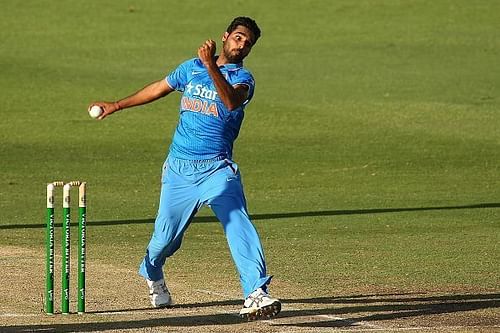
India vs Australia, 3rd ODI: What does the law say about Bhuvaneshwar Kumar's dead ball delivery?

The ninth over of the 3rd ODI in the recently concluded series between India and Australia sparked a debate, as umpire Michael Gough deemed a particular delivery by Bhuvneshwar Kumar as a dead ball. Bhuvi ran in to bowl at Aaron Finch, who was on strike and quite peculiarly, released the ball from way behind the crease, in fact almost parallel to the umpire.
The out of form Aaron Finch was caught unawares and backed out from attempting to play the delivery. Bhuvneshwar Kumar was taken aback by the call given by the umpire and was heard saying, “That can’t be a dead ball”, on the stump mic.
Here is a video of the delivery by Bhuvi
With a dramatic shift in the balance of the game between bat and ball in the last few years, bowlers are trying everything possible to gain that extra bit of advantage. We have, on numerous occasions, seen the likes of Kieron Pollard deliver the ball from behind the crease, mystery spinners have emerged, knuckle balls, slowers yorkers, slower bouncers...you name them.
The law, though, states that the bowler cannot deliver the ball from behind the umpire. This is because the umpire cannot see how the ball was delivered. But here, in this case, Bhuvneshwar Kumar delivered the ball from beside the umpire and should have been perfectly acceptable to have completed that delivery. Michael Gough though thought otherwise.
But why was the delivery called a dead ball? Let us see what the law says:
The MCC law regarding dead ball in this context states the following:
20.4.2.5 the striker is not ready for the delivery of the ball and, if the ball is delivered, makes no attempt to play it. Provided the umpire is satisfied that the striker had adequate reason for not being ready, the ball shall not count as one of the over.
20.4.2.7 there is an instance of a deliberate attempt to distract under either of Laws 41.4 (Deliberate attempt to distract striker) or 41.5 (Deliberate distraction, deception or obstruction of batsman). The ball shall not count as one of the over.
20.4.2.8 the bowler drops the ball accidentally before delivery.
In this context, the above three laws could have been considered. With respect to point 20.4.2.8, the videos make it quite clear that the release of the ball was not accidental. It was very much a planned delivery, ruling this option out.
That leaves us with laws that refer to (a) a deliberate attempt to distract the striker and (b) the batsman not being ready for the delivery.
However, the umpires didn't seem to have issued any kind of warning to the Indian team or to the bowler Bhuvneshwar Kumar. Thus one could assume that the umpires might not have felt it as a deliberate attempt by Bhuvneshwar to distract the batsman beyond the spirit of the game.
On the other hand, Finch backed out of the delivery the moment he saw Bhuvneshwar load up just behind the umpire which may have caused the umpire to deem it a dead ball as the batsman wasn't clearly prepared for the delivery. That makes law 20.4.2.5 the most possible reason for Bhuvneshwar's surprise delivery to be deemed a dead ball.